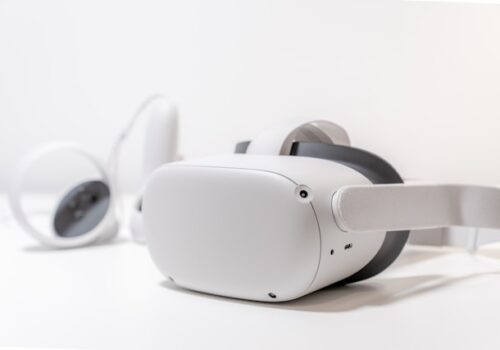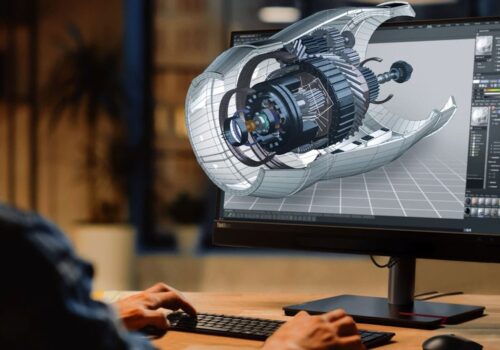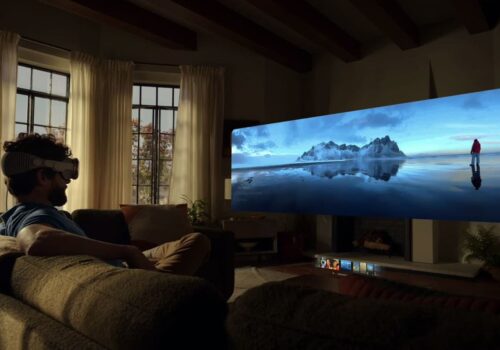Virtual Reality vs. Augmented Reality; Are There Any Differences?
VR and AR are two concepts you may have heard before. They look similar to the layman, so they are usually taken to be the same, but they have key differences that you should know. However, they sometimes bleed into each other and have immense potential for the future of many industries, including education, gaming, e-commerce, and many others. In this tutorial, you will find the key differences between both technologies, how they work separately and when both concepts work together. But before pairing both and finding how they distinguish from each other, let’s discuss them individually.
What Does The Concept of Virtual Reality Mean?
As humans, we’ve always been fascinated by unknown worlds, new dimensions, and galaxies. That’s what makes the concept of VR so exciting. Simply put, VR is a computer-generated simulation of an alternate world with the help of special glasses commonly known as VR headsets.
These simulations can create almost any world imaginable to the player using special tools like sensors, headsets, gloves, and computers. If you have ever imagined what it feels like being in a war, in space, being the pilot of a fighter jet, or in a palace, VR headsets can give you the experience. It does not matter where you are; VR headsets will give you the impression that you’re somewhere else. They are opaque, meaning they block out your surroundings and replace them with something else.
How Does VR Work?
The entire concept of VR lies in simulating vision, so to experience it, you need VR headsets. Some of the most popular headsets available today include the PlayStation VR, HTC Vive Cosmos, Valve Index, and Oculus Quest, among many others. When you put these headsets on while they’re turned off, they blindfold you meaning you are shut out from interaction with the real world.
However, when the headsets are turned on, the lenses refract the OLED or LCD panels to fill your vision with what is being displayed. This could be a game, virtual space, a 360-degree video, and many others. The headsets take you to wherever they want you to go. The visuals you see are rendered using an HDMI cable connected to a mobile phone or PC. Sometimes, there are handheld wearables, including gloves, that simulate reality. Other elements that can be used include speakers and, in some cases, visual, auditory, and haptic simulation is employed to immerse you into the fictional reality.
What Does The Concept Of Augmented Reality Mean?
The word ‘augment’ means to make something greater by adding to it. Therefore, AR adds to your vision. Unlike VR, which replaces your surroundings with a new one, AR amplifies what you see.
AR can be regarded as a blend of both the digital and the physical world and adds to your real-life experiences. With AR technology, you can see computer-generated 3D elements in your field of view. AR supplements your physical reality to project virtual pictures, characters, and elements into your view.
How Does AR Work?
AR combines computer vision, mapping, and depth tracking to show you the right content. It starts with the camera of your smartphone, tablet, or even smart glasses as long as it has AR software. Whenever you point the device at an object, the software recognizes and analyzes it using computer vision technology to show digital content appropriate to what you see. Therefore, AR enhances your physical environment by providing context to what you see in real-time.
Differences Between VR and AR
Although they may have similar designs, both technologies accomplish very different things in different ways. The technologies have lots of potentials and can completely change how we use computers and see the world in the near future. Here are the key differences between VR (VR) and AR (AR):
| VR | AR |
| VR replaces reality by taking you away from the physical world into somewhere else – an imagined reality. It creates a totally immersive virtual environment. | AR amplifies your reality. It adds to what you see by projecting information on top of the objects in your vision. It augments the real world, providing context to what you see. |
| VR is regarded to be 75% virtual and 25% real. | AR is the opposite. It is regarded to be 75% real and 25% virtual. |
| VR isolates you from the real world. You’re no longer in touch with what happens in the physical world and are completely immersed in a fictional environment. | With AR, you’re not isolated from the real world. You remain in touch with what happens in your surroundings and can still interact with people and objects that you see. |
| You need a VR headset to experience VR. | You do not need a headset to experience AR. However, both technologies require special devices. For example, your device needs AR software to augment your reality. The device could be a smartphone, tablet, or smart glasses. |
| VR enhances only a fictional reality. | AR enhances both the virtual and physical worlds. |
How Can VR and AR Work Together?
When VR and AR meet, it is usually called MR – Mixed Reality. MR is also known as Hybrid Reality, and it combines digitally-generated graphics with the real world.
Some technologies are currently combining both virtual and AR. A good example is the Microsoft HoloLens. Technologies like the HoloLens have VR headsets, but instead of transporting you into a completely different world, you stay in the same environment. You can see things around you in the real world, but there are additional digital elements layered on top of the physical entities you see.
With MR, you can project what you want to see on blank walls in the room. You could project your browser on the wall, browse the internet, and scroll through web pages by tapping the air.
Conclusion
Both Augmented Reality and Virtual Reality are powerful technologies that show a lot of promise. They can change the way we do things and use computers in the future, but we cannot say for sure if one will be more successful than the other.





